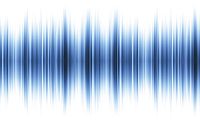Gibson Measures Guitar Coatings Using Ultrasonic Technology

Before using the PosiTector 100, measuring the coating on their world-famous wooden guitars was a challenge for Gibson Guitar. Conventional magnetic and eddy-current-type coating thickness gages measure coatings only on metal substrates. Out of necessity, Gibson began testing their coating thickness destructively, as they were unaware of any better solution at that time.
Gibson Process Engineer Dan Falck said they attempted to evaluate the coating thickness by pulling the lacquer off the wood and measuring it with a micrometer. Using flood lamps and razor blades, the lacquer was heated and a small rectangular piece was cut into the surface. Then, while it was still hot, the rectangular piece was stripped from the wood by hand and measured with the micrometer. This method often tore and distorted the coating, making it difficult — if not impossible — to measure accurately with the micrometer. The guitars used for testing were then scrapped because the testing process damaged them beyond usable condition. Destructive testing proved to be expensive, time-consuming and inaccurate. A better solution had to exist.

Using the PosiTector 100, Gibson was able to accurately and nondestructively measure the lacquer on their valuable guitars. They have not only decreased their lacquer usage, but they are able to take meaningful measurements without excessively disrupting their production process. There is no need to scrap guitars to measure their coating thickness, and the thickness over the entire surface of a guitar can easily be measured to ensure a smooth, even coating. Rework is minimized due to an increased ability to control the coating process.
Gibson has been using the PosiTector 100 ultrasonic coating thickness gage to measure lacquer on their wooden guitars since 1995. The gage is now used in several of Gibson’s facilities, and Falck says they use the gage hundreds of times per day.
“These gages are invaluable to our operation,” says Falck. “They have saved us many thousands of dollars in rework. The PosiTector 100 has helped our finishing department keep our buffing department happy.”
For more information on coating thickness gages, contact DeFelsko Corp., 802 Proctor Ave., PO Box 676, Ogdensburg, NY 13669; phone 800/448.3835; fax 315/393.8471; visit www.defelsko.com; e-mail techsale@defelsko.com.
Links
Looking for a reprint of this article?
From high-res PDFs to custom plaques, order your copy today!




